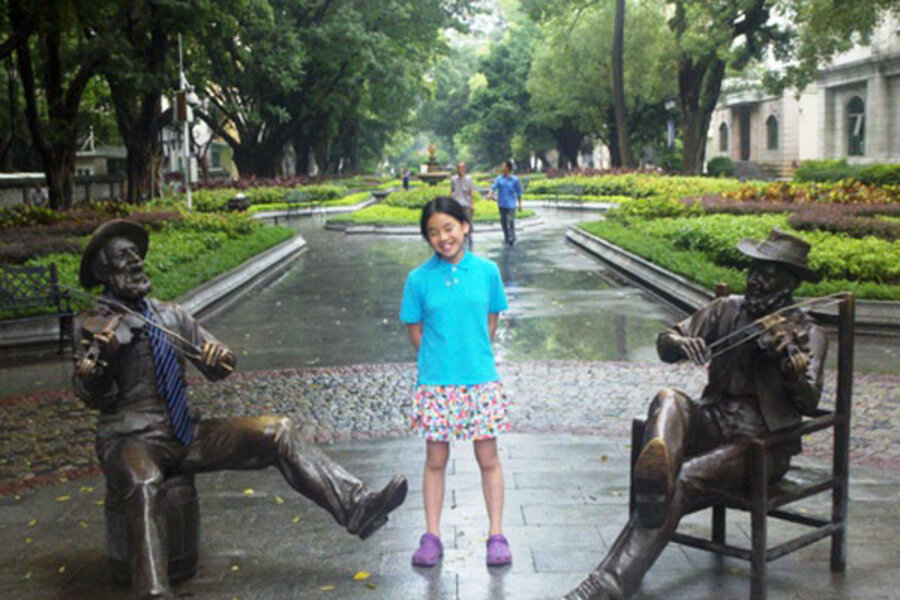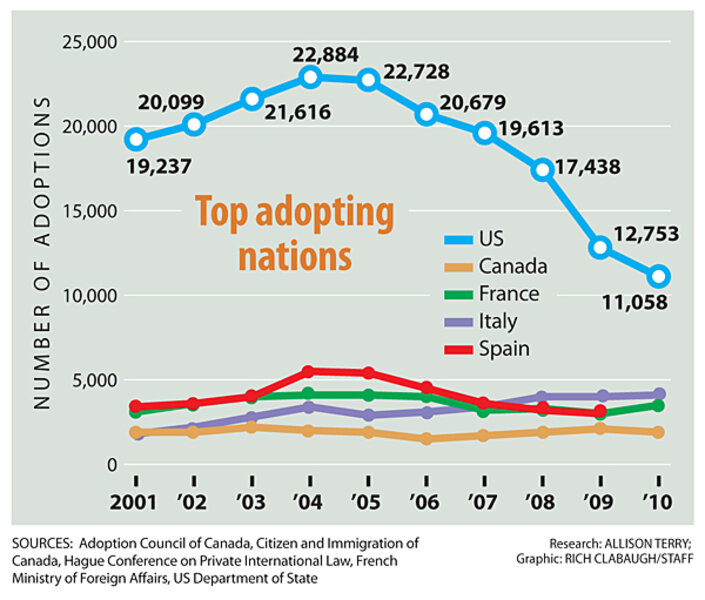China adoption diary: East-West diplomacy, and family normalizing
Loading...
| Guangzhou, The Garden Hotel, June 25
Part 11 of Gretchen Belsie’s account of her trip with husband Laurent and their first adopted Chinese daughter – 10-year-old Grace – as they head to meet and bring home 7-year-old Madeleine Bao Yi.
Today was the day we all returned to the medical clinic to have our children’s tuberculosis injections checked after the required 48-hour waiting period. Of course, Madeleine Bao Yi had no idea what was in store as she sat happily at breakfast, enjoying olive loaf, a hardboiled egg, and some dumplings.
It’s interesting to watch the dynamics of the adoptive families as they start out their day in the breakfast room. The waitresses, dressed in vests and long skirts slit way up the side, are quite attentive. They clear the used dishes away promptly as well as offer immediate linguistic intervention when a Chinese child goes ballistic, much to the consternation of his or her American parents. Once the child feels heard, things usually settle down. If not, administer Goldfish, ASAP.
We arrived at the clinic shortly after 1 p.m. to find the place very crowded with Chinese families. Simon brought us to the special section for adoptive families and we were waited on right away. The requirement for passing the tuberculosis test was that the welt on the forearm could not be longer than 10 millimeters. The other three families were in and out in a flash. As we approached the door, Bao Yi looked very hesitant but we coaxed her in. The nurse on duty poked the welt, looked at it this way and that way, drew a faint line on the skin with a pen, got out a measuring stick and conferred with her assistant. This process was then repeated. Finally, the nurse admitted that the welt was 9+ millimeters and let us walk.
Things picked up considerably as we headed to Shamian Island, an island carved out in the Pearl River that was once the location of the British, French, and other legations, which facilitated and forced trade between China and the West. The feel of the island is that of a calm, garden-like oasis with gracious European architecture and brick streets amid the hustle and bustle of greater Guangzhou. Pale yellow and peach stucco buildings, black wrought iron fences, colorful flowers, and immaculate shrubbery.
Shamian Island holds a special place in the hearts of many adoptive families because the White Swan Hotel is located there. This beloved high-rise cocoon for newly blended families has been under massive reconstruction for more than two years now. When we stayed there in 2003, each family received, gratis, a special edition “adoption Barbie,” featuring the standard leggy California blonde with a tiny Chinese baby in her arms.
For old time’s sake, we walked over there so Grace could see where it all began. The hotel was closed but we could see inside the lobby, or what was left of it. The Swan was officially gutted; piles of broken cement and tiles were roped off and heaped up in the once-elegant entrance. Right down the street, The Deli Shop was also closed, though we retold, once again, the story of how Laurent went out that first night as a daddy and brought back red bean and tuna sandwiches for his little family.
In our wanderings, we came across several photo shoots with brides and grooms done up in full trendy wedding attire. We assumed that this was a spread for a magazine, but Simon later assured us that no, these were the wedding couples themselves getting the all-important photos taken months before the actual marriage took place. The quiet side streets lend themselves as classy backdrops for a wedding album. Numerous photography studios are located on the island and they rent the clothes used in the photo shoots, even though they may not be the same style clothes the couple will wear on their special day.
The big finish for the afternoon was a return to the hotel swimming pool. When we finally told Bao Yi it was time for swimming, she began to chortle and hop around the room in a true happy dance. We all went down to the pool and enjoyed some cooling off.
Tomorrow’s plan includes a visit to a cultural museum and a group lunch at a Thai restaurant called “Cow and Bridge.” We look forward to it all as our time here is growing short.
After the girls go to sleep, I must go into the bathroom and sneakily wash out the one outfit that Bao Yi insists on wearing, day in and day out. It could certainly stand to be cleaned, but more importantly, Grace has requested it. “Mama, please wash that outfit tonight. I just can’t bear the thought of Bao Yi going out on the street in it again.”
It’s all about East-West diplomacy, my friends.







